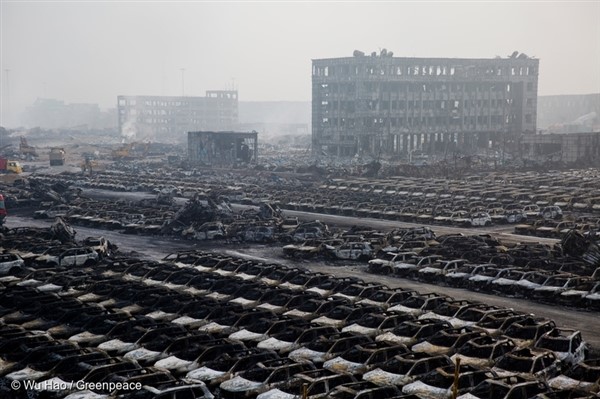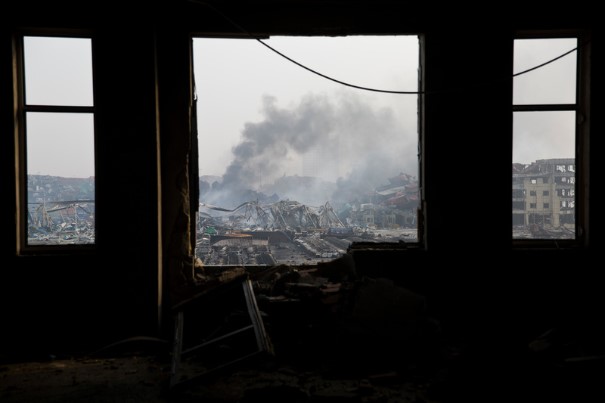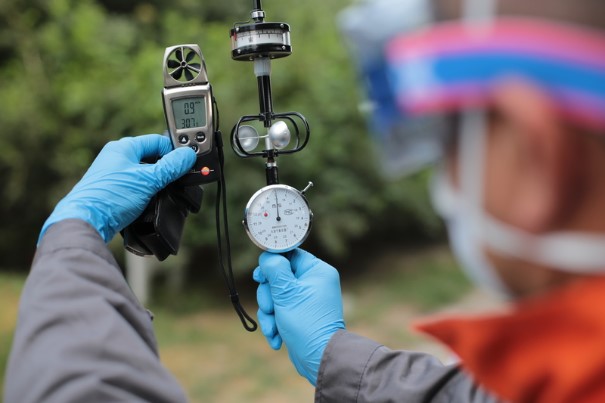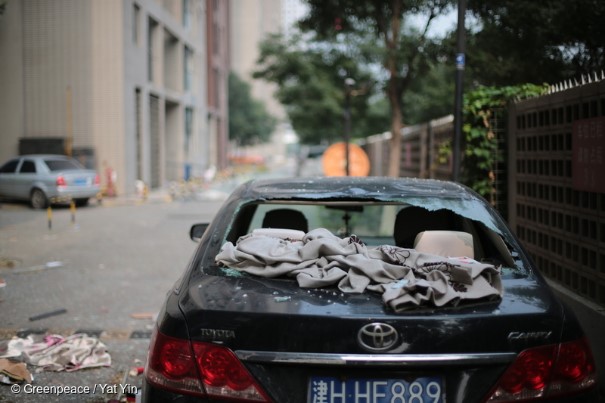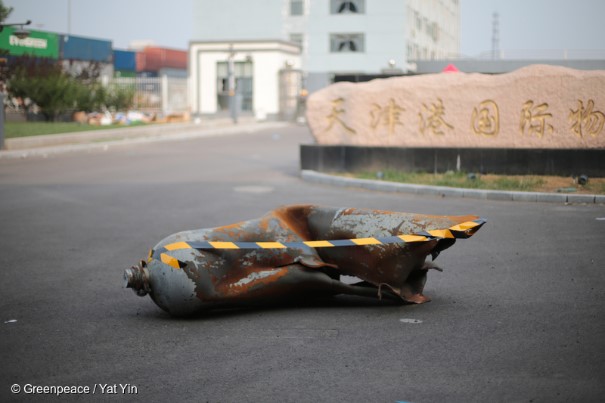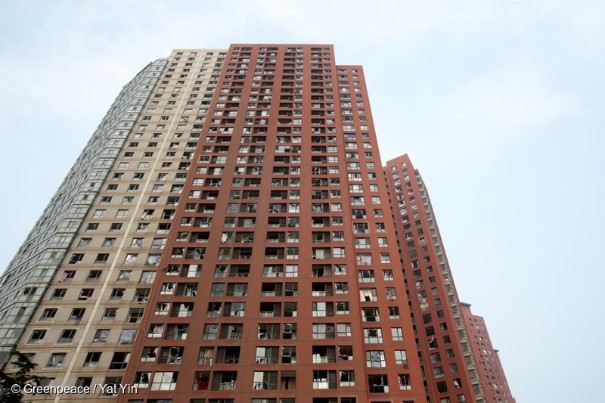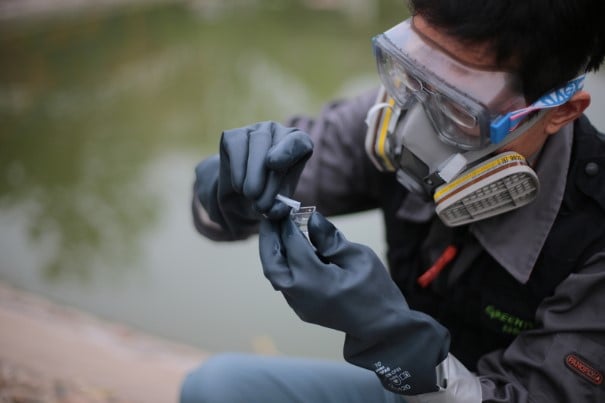It was like a scene from Armageddon, but this was no Hollywood movie. Blasts so severe they were seen from space, and when the fires had “settled” local residents and the whole of China woke up concerned for the safety of the citizens of Tianjin and the brave firefighters tackling the blast, many of whom lost their lives.
For my colleagues and I at our Beijing office, this was the start of an intense and important period. Thirty staff banded together to become the Greenpeace Tianjin Rapid Response Team, working day and night to investigate conditions and send crucial information to the media and the public. It was sleepless, stressful and worrying; but also filled me with hope and a feeling of conviction of Greenpeace’s vital role in society.
Squeezing water from a stone
Struggling against an immense situation and a vacuum of information regarding the chemicals involved, we “squeezed water from a stone” to find out as much as we could about the chemical hazards that were lingering in the Binhai area after the blast.
Dressed in a safety gear, I volunteered as part of a team who ventured as close as 900m from the blast site to take water samples and bear witness, but I was not prepared for the devastation I was about to encounter. Glass from windows lay shattered on the ground, cars burnt out and an eerie silence lingered over the zone.
The local residents we met and interviewed were full of fear and uncertainty, exacerbated by the Tianjin government’s slow release of information. As an independent group doing our best to identify the toxic substances and advise residents on how best to protect themselves and their families, Greenpeace was warmly welcomed. Residents were happy to see us, keen to help and hear our findings.
Back at HQ
Whilst we were in the field, a number of our colleagues back in Beijing HQ were conducting their own desktop research on how wind direction and rain could pollute the air quality and sea. But this was not the only problem – if a warehouse was storing tubs of hazardous chemicals that detonated the combined equivalent of 24 tonnes of TNT, how many other hazardous chemicals were stored illegally (and potentially lethally) in other ports around the country?
What we uncovered was shocking. Looking at ports in Shanghai, Ningbo, Guangzhou and Qingdao we discovered that the issue of poorly enforced hazardous chemical regulations is a nationwide problem.
GPEA has found chemical warehouses violating regulations in 4 major Chinese cities http://t.co/cz8nTFnMux pic.twitter.com/gLSt7McR4V
— Greenpeace East Asia (@GreenpeaceEAsia) August 21, 2015
Warehouses built within 1000m or so of elderly homes, kindergartens and residential areas violated safety regulations and proved that what happened in Tianjin could happen anywhere. With coverage picked up in domestic and international media, it set off a chain reaction of information causing outrage and spreading awareness across China.
The fight continues
For Greenpeace, it’s always been important to “bear witness” – to see, record and share what effects we’re having on our planet so that this information is preserved and seared into the public’s consciousness.
Right now the situation is stable and the workload of our rapid response team has slowly quietened. But it’s far from over. We now know that these chemicals are literally in our backyard with the potential to explode at any moment. Greenpeace will continue to monitor the situation, publicise wrong doings and push policies to change how the hazardous chemicals industry is regulated, because I, along with millions of other people, do not want to see an avoidable tragedy such as this happen again.
Eric Liu is a Toxics Campaigner at Greenpeace East Asia

